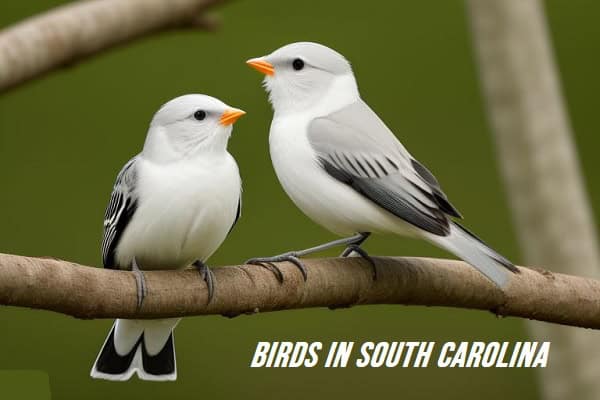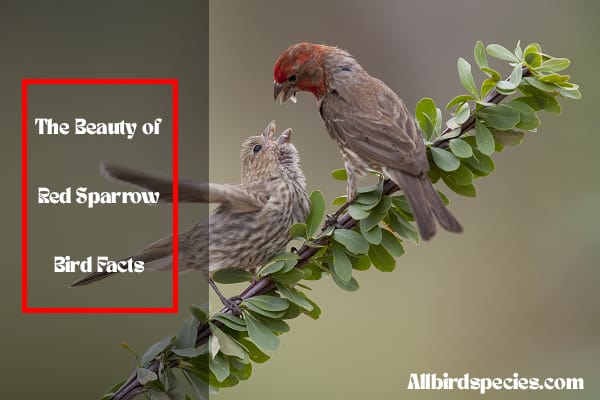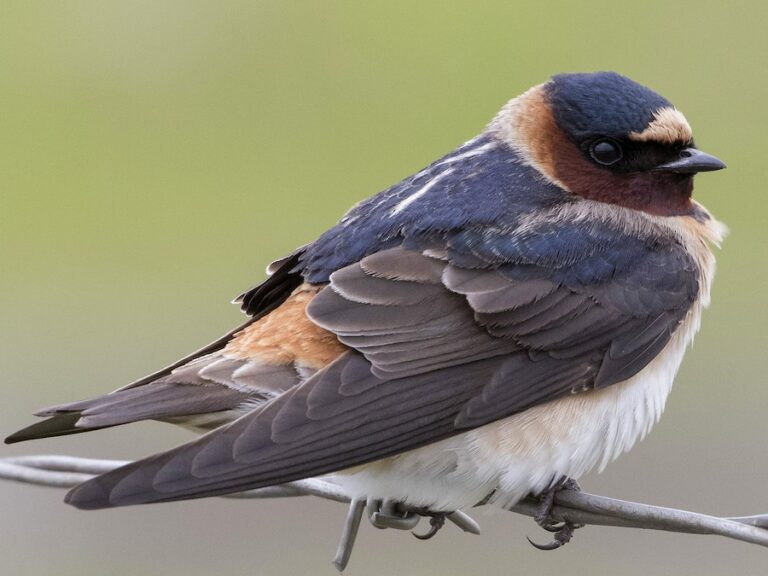29 Most Common Birds in South Carolina (With Pictures)
It can be difficult to answer this question because South Carolina is home to an incredible variety of birds. In fact, over 424 different species have been recorded here!
To make it easier to understand, I will focus on the birds that are most commonly seen and observed. Today, you will learn about 32 types of birds that are frequently found in South Carolina.
If you’re interested, you might be able to spot some of these species at my bird feeding station right now. I have a live high-definition camera monitoring my bird feeders 24/7, so you can see the birds in action.
Here We’ll Learn About 29 Different Types of Birds in South Carolina!!
1. Northern Cardinal
The Northern Cardinal is a striking bird that resembles a finch. It is roughly the same size as a thrush and has several distinctive features. One of its most notable features is its showy crest, which is a characteristic that many birds share. The Northern Cardinal also has a large, conical orange-red bill that helps it to eat its favorite foods.

The males of this species are particularly striking, with bright red plumage and black markings on their throat and face. They also have grayish-red feathers on their wings, back, and tail. In contrast, the females are buff and pale brown with red accents on their wings, tail, and crest. They have less black on their face and throat compared to the males.
Young Northern Cardinals have a crest and dusky gray feathers. When they fly, they display a long, rounded tail.
The Northern Cardinal is an opportunistic eater, consuming a variety of seeds, fruits, and insects. In the warmer months, they also feed on flower buds. This bird uses its bill to pick food items from the ground, leaves, and branches.
One of the most recognizable features of the Northern Cardinal is its happy, whistled song. This beautiful bird species is frequently heard in gardens, second growth, and other habitats throughout South Carolina.
2. American Crow
The American Crow is a large, noisy bird that is entirely black in color. Both male and female crows have the same appearance, with a strong, thick bill that has a slightly hooked tip. Sometimes, you might notice a deep purple or dark blue sheen on their feathers, but for the most part, they look like a dull black color.
One of the most distinctive features of the American Crow is its long wings that almost reach the end of its broad, squared-off tail. Another unique characteristic is the presence of feathers on the upper part of its bill.

American Crows are very vocal birds of south Carolina and can often be heard making their familiar “Caw! Caw! Caw!” sound. This call is a common sound in many areas where these birds live.
These birds have a varied diet and are known to be very adaptable. They eat nuts, grains, fruits, insects, young birds, bird eggs, small animals, garbage, and even dead animals. American Crows can eat food while perched, but they mostly forage for food while walking on the ground.
Another interesting fact about American Crows is that they are considered to be very intelligent birds. They are known to give alarm calls when they see a person or other animal that they perceive as a threat. American Crows are also very social birds and are often seen in flocks. They can be found living in various habitats throughout South Carolina.
3. Mourning Dove
The Mourning Dove is a beautiful bird that is a mix of buff, brown, and gray colors. It has a long, pointed tail and a small, round head. This dove also has a slender, black beak and a gray ring around its eyes.
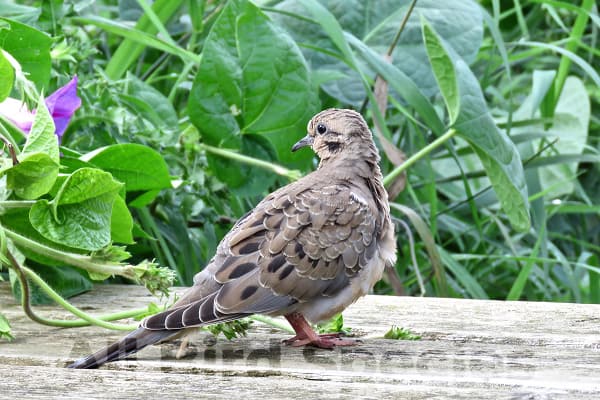
One of the most distinctive features of the Mourning Dove is the black spots on its wings and the gray color on its back, rump, and tail. The tail also has white feathers, and the male doves have a black mark on their face and a patch of golden feathers on the side of their neck. Females look similar to males but are duller and browner in color.
Mourning Doves mostly eat seeds and grains. They often visit bird feeders and can either perch on the feeder or pick up food from the ground. When they are not at feeders, these birds of south Carolina feed on the ground in open areas.
4. Carolina Wren
The Carolina Wren is a small to medium-sized bird that has been the official state bird of South Carolina since 1948. It is known for its distinctive reddish-brown upperparts and rich buff underparts. Both males and females have a white throat, a mottled white face, and a prominent, long, white eyebrow. They also have a bit of white and black barring in their short, rounded wings and longish tails.
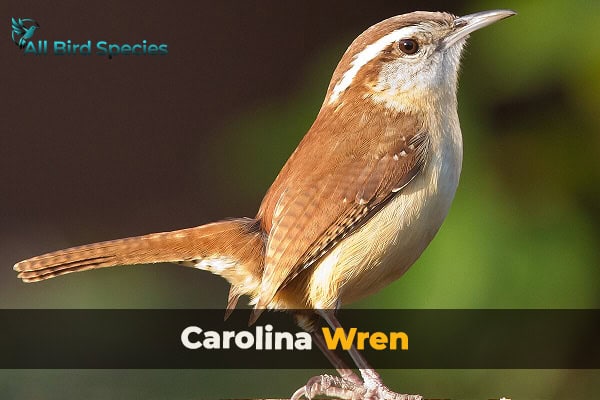
Carolina Wrens are known for their long, grayish bills, which they use to pick insects and other small creatures from vine tangles, leaves, and other types of vegetation. They forage by exploring vegetation in bushes and low trees, although they can also forage on the ground. However, they usually stick to low and mid-height vegetation.
One of the most notable features of the Carolina Wren birds is its unique song. Only males sing, and their song is a series of several quick, whistled notes that are repeated a few times. The entire song usually lasts less than 2 seconds and the notes are often described as sounding like “tea-kettle, tea-kettle, tea-kettle.” This song is a familiar sound in habitats throughout the state of South Carolina.
Carolina Wrens are typically found in pairs and often sing together. They are known to be territorial and will defend their territory from other birds. They are also known to join other birds when mobbing a snake or other predator.
5. Northern Mockingbird
The Northern Mockingbird is a striking bird known for its pale gray and white plumage, long tail, and impressive singing abilities. It is roughly the same size as an American Robin, with a gray back, pale gray and buff underparts, and a white throat.
The bird has distinctive white wing bars, broken white eyering, and some black markings around the eyes. Males and females look similar, with white in their long tails, yellowish eyes, and short, dark beaks. Juveniles resemble adults but are paler with paler bills and some spotting below.
Behavior and Diet
Northern Mockingbirds are known for their bold behavior, particularly in defense of their nests. They are aggressive towards cats and even humans that venture too close. They are also skilled at catching insects, running and stooping to pick them from the ground or sallying into the air to catch them on the wing. In addition to insects, they eat berries and other fruits while perched.
Interesting Facts
- The Northern Mockingbird’s oldest recorded age is at least 14 years and 10 months.
- Males continue to add new sounds to their repertoires throughout their lives, learning around 200 songs.
- The bird’s “wing flash” display, where it half or fully opens its wings in jerky intermediate steps, may be used to startle insects or attract a mate.
- Northern Mockingbirds sing all through the day and often into the night, with nocturnal singing more common during the full moon.
- The female Northern Mockingbird sings too, although usually more quietly than the male, and often only when the male is away from the territory.
6. Tufted Titmouse
The Tufted Titmouse is indeed a small, crested, pale grayish bird with a distinctive appearance. Males and females share a similar plumage, featuring blue-gray above, with a bit of black above a stubby black bill and a white face. The white underparts have peach-orange on the flanks, and there is some white edging in the wings. The beady black eye on a pale face adds to the bird’s endearing appearance, making it a popular choice for the “cutest bird at the feeder” title.
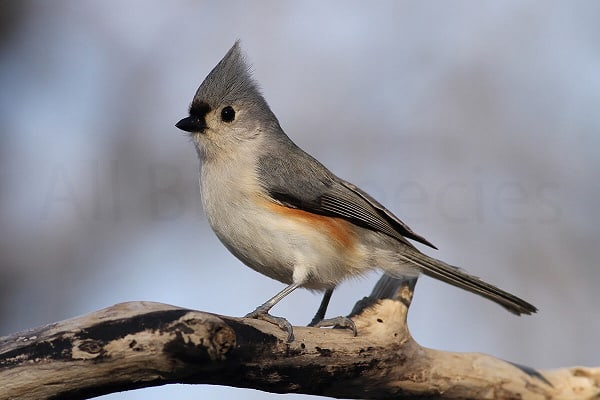
In terms of behavior, the Tufted Titmouse is primarily a seed-eater, but it also consumes insects. It forages by moving through vegetation and picking bugs from the bark and foliage. When faced with tough seeds, it uses its foot to hold the seed and then hammers it open with its beak.The Tufted Titmouse is a common feeder bird and is often seen foraging with other small bird species such as chickadees, warblers, and finches. In South Carolina, its cheerful whistled call, often transcribed as “peter, peter, peter,” can be heard in parks, gardens, and woodlands throughout the state.
Overall, the Tufted Titmouse is a delightful bird species known for its unique appearance and engaging behavior.
7. Blue Jay
The Blue Jay is indeed a medium-sized, beautiful bird with a distinctive appearance. It has a stout black beak and gray and blue plumage, with brighter turquoise blue in its wings and tail. The face is pale, with a white throat bordered by a thin black line, and there is a black line in front of the bill and on the back part of the face. Both males and females look alike, with rounded wings featuring black barring and white marks, and long tails. The breast and belly are pale gray and white.
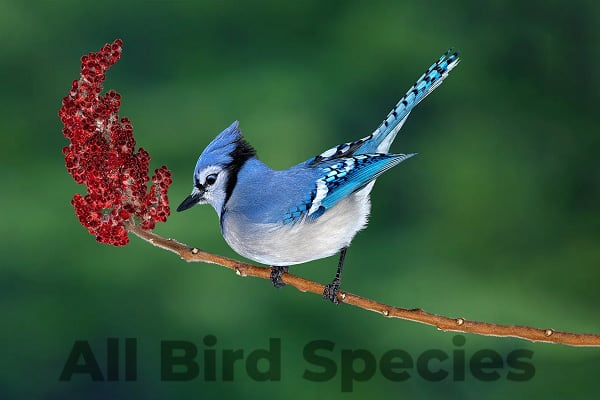
Blue Jays are known for their diverse diet, which includes seeds, acorns, and other nuts. They also consume cicadas, dragonflies, and other large insects. Like other jays and crows, they can also feed on carrion, nestlings, bird eggs, and other small animals.
These intelligent birds of south carolina are skilled at catching insects on the wing and picking food items from foliage, the ground, and feeders. They are highly social and are commonly seen and heard throughout South Carolina, where they are known for their complex social systems and tight family bonds.
8. Pine Warbler
The Pine Warbler is a small bird with a slender dark beak and a distinctive yellow and olive coloration. It has yellow on its face, throat, and breast, and a white belly. The bird also has white under its tail.
Physical Characteristics
Pine Warblers have narrow, broken eyerings, olive upperparts, and some olive streaks on the breast. Their long wings are blackish and have two white bars. Female birds look like males but are duller, while juveniles are even duller and resemble grayish warblers with white wing bars.
9. Red-bellied Woodpecker
The Red-bellied Woodpecker is one of my favorite birds to see at my feeders. I think they are beautiful with their black and white barred backs. However, their name can be confusing because their bellies don’t contain much red coloring, other than a faint red wash.

Red Coloration
Most of the red on these birds is actually on their head. The red coloring is the only way to tell males and females apart!
Male and Female Differences
Males have a red plumage that extends from their beaks to the back of their necks. which makes them more attractive. This bright red color is a distinctive feature of males. Females, on the other hand, only have red on the back of their necks. This subtle difference in red coloration is the key to identifying males and females.
Overall, the Red-bellied Woodpecker is a beautiful and fascinating bird that can be a delight to observe at your feeders.
10. Carolina Chickadee
The Carolina Chickadee is a small, cute bird found in woodlands, parks, and gardens. Both males and females have a black cap, white face, and black throat. They are gray above and pale gray and buff below. These birds have short gray wings with white edging and a medium-length, grayish tail.
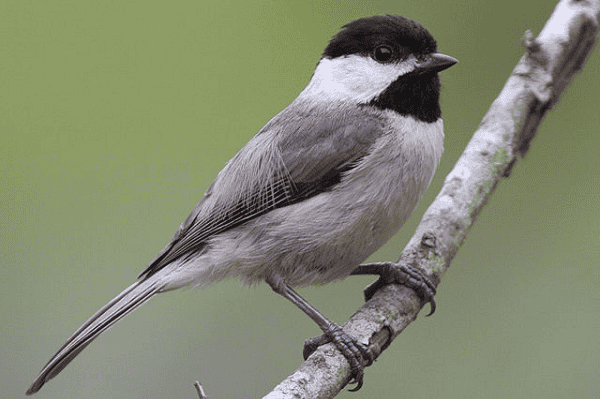
Feeding Habits
Carolina Chickadees feed on small insects and seeds. They explore bark, twigs, and foliage to find food. They can make acrobatic moves to reach food, often using their strong legs and feet to hang from a twig. These birds of Carolina are also common visitors to feeders, where they feast on seeds and suet.
Social Behavior
The Carolina Chickadee is a social bird that usually occurs in small groups. As they move through parks and other habitats, we often hear their nasal “dee-dee-dee” call and “see-bee, see-bew” vocalizations. These birds are found throughout South Carolina.
11. Eastern Towhee
The Eastern Towhee is a slender bird resembling a sparrow, with a black, conical bill. Similar in size to a thrush, the male Eastern Towhee has reddish eyes and a jet-black head, breast, and upperparts.
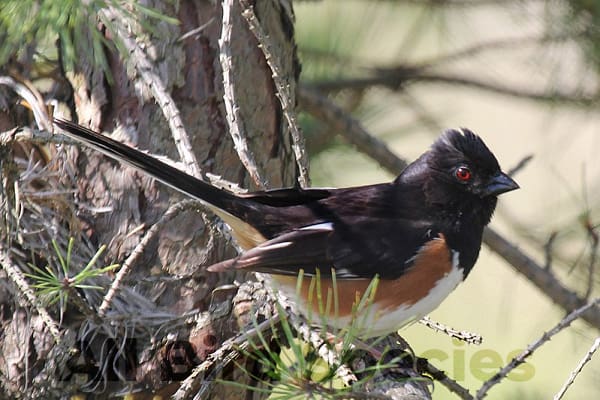
Distinctive Features
It has white on its belly, chestnut flanks, and peach-orange under the tail. The black wings are marked with white, and there are white spots on the underside of the tail.
Male and Female Differences
Female Eastern Towhees resemble males but are dark brown instead of black. Both genders feed on insects and seeds. They forage by hopping in a line, using their bills to pick up bugs and other food. They also scratch the ground with their feet to move leaves and uncover insect prey.
12. Indigo Bunting
The Indigo Bunting is a small bird that looks like a finch. It has a gray, cone-shaped bill. The male Indigo Bunting is one of the most beautiful birds in South Carolina.
Male Appearance
The male is a deep, sapphire blue color with black highlights on his wings, tail, and face. He is a stunning sight to see.
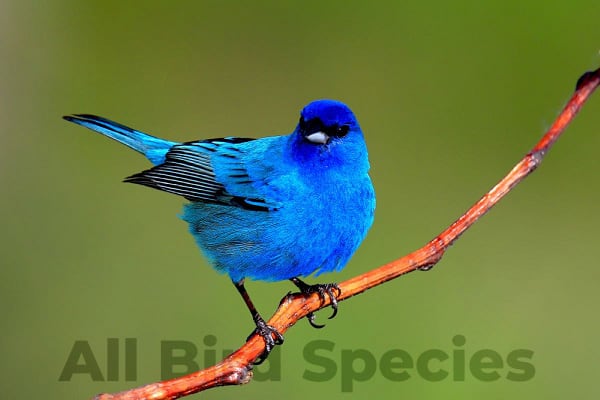
Female Appearance
Female Indigo Buntings are pale brown with some blue on their wings, rump, and tail. They also have brown streaks on their pale underparts.
Color Variation
Male Indigo Buntings can appear entirely black or show different shades of blue. This is because the blue color is not caused by pigment, but by the way light interacts with the structure of their feathers.
Diet and Habitat
Indigo Buntings eat insects and seeds. They pick their food from low vegetation and prefer brushy areas. In spring and summer, you can often hear their chirping and warbling song in South Carolina.
13. Common Grackle
The Common Grackle is a big black bird with a long, wedge-shaped tail and light-colored eyes. It is a bit bigger than a Blue Jay. Both male and female Common Grackles are black with metallic highlights in colors like bronze, dark green, purple, and dark blue.
Physical Characteristics
The Common Grackle has a strong, large beak, fairly long legs, and medium-length wings. The female looks similar to the male but has less iridescence and a shorter tail.

Adaptability and Diet
This blackbird has adapted well to living near people and is often seen in suburban areas. It eats a wide variety of foods, including seeds, grains, insects, fruit, and small animals.
Foraging Behavior
Common Grackles usually search for food by walking on the ground. They use their pointy beaks to pick up food from places like farm fields, lawns, and other open areas.
14. White-eyed Vireo
The White-eyed Vireo is a small bird with a distinctive appearance. It has bright yellow spectacles around its white eye and an olive and gray head. The bird has a gray bill with a tiny hook on the tip, two white wing bars, and pale underparts with yellow flanks.
Physical Characteristics
Both male and female White-eyed Vireos look the same, with gray-olive upperparts and an olive tail. In fall and winter, young Carolina birds have dark eyes and pale gray heads. Some also have white spectacles.
Feeding Habits
These small birds feed on insects and larvae. They forage by moving through bushes and other low vegetation, picking food from leaves and other hiding places.
Vocalizations
White-eyed Vireos frequently sing a quick and distinctive chattering song, often described as “chick per wee of chick!”
15. Chipping Sparrow
The Chipping Sparrow is a tiny bird with a small, slightly pointed bill. Both males and females have reddish caps, a black line through the eye, white eyebrows, and white crescents around their eyes.
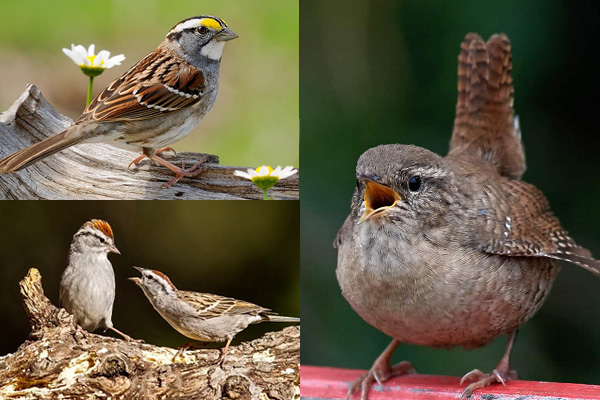
They have gray underparts, gray on the lower back and rump, brown with black streaking on the upper back, and a fairly long, gray-brown, forked tail. Their rounded wings have black marks, and two white wing bars, and in fall, they have brown caps and buff eyebrows.
Chipping Sparrows pick insects and seeds from the ground in open areas with short grass and are common in South Carolina’s parks, piney woods, and other semi-open habitats with evergreens. Their mechanical trilled song is often heard in spring and summer, but most migrate south for the winter.
16. Great Crested Flycatcher

The Great-crested Flycatcher is a large and distinctive flycatcher species with a bushy crest and olive-brown upperparts. Both males and females have a gray throat and breast, yellow belly, and reddish-brown in the wings and tail. Their wings also feature two pale wing bars and some white edging in other feathers. The flycatcher’s large beak is dark gray with a pale pinkish base.
17. Cattle Egret
The Cattle Egret is a medium-sized white heron with a stout, yellow-orange beak. Both males and females have long wings and squared tails. In spring and summer, they sport white plumage with orange on the head, breast, and back, along with orange beaks and legs.
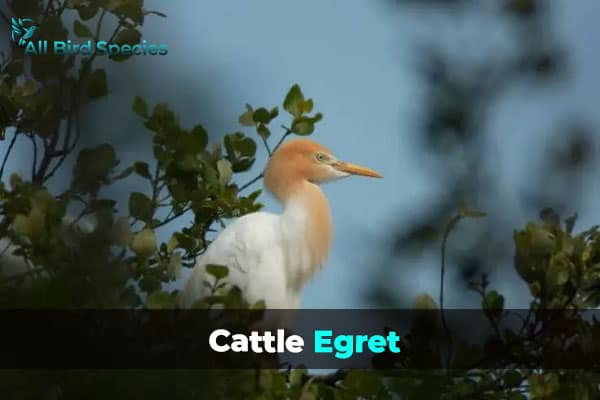
After breeding, they turn entirely white with yellowish beaks and dark legs. Originally from Africa, they spread to South America and the USA in the 1950s. These birds of south carolina are known for following cows and large mammals to catch frogs and insects. They are social birds found in wetlands and pastures across South Carolina, migrating south for winter in the fall.
18. Common Nighthawk
The Common Nighthawk is a bird that’s kind of a mix of buff, white, and gray colors. It has long, pointy wings. Even though it’s called a “hawk,” it’s not one of those birds that hunt other animals. It’s part of a group of birds called “nightjars,” which are birds that come out at night and eat bugs.
These birds have a white shape that looks like a crescent near the beginning of their black feathers. Also, their tails are long and split into two parts, and they have white in them. Both male and female Common Nighthawks have a mix of brown, gray, and black colors on top, and their bellies are kind of buff with thin black lines.
The male birds have white throats, while the females have buff throats and less white on them overall.
Hawks in South Carolina
19. Red-shouldered Hawk
The Red-shouldered Hawk is a medium-sized raptor with long, broad wings and a fairly long tail. Adult birds have striking orange breast and orange barred underparts. Their head and back are reddish-brown with dark streaks, and they have a dark border on each side of their light-colored throat. The blackish wings have reddish shoulders and white markings, and the black tail has white bands. Both sexes are similar, but females are larger than males.

Young birds in south Carolina lack the bright colors of the adults, having browner plumage and brown streaks on pale underparts. All ages of the Red-shouldered Hawk can be identified in flight by white bands in a fairly long, dark tail, and a pale, crescent-shaped mark at the base of the primaries on each wing.
The Red-shouldered Hawk is a forest raptor that feeds on small animals caught on the ground.
20. Broad-winged Hawk

The Broad-winged Hawk is a medium-sized raptor with long, broad wings and a broad tail with thick white bands. It is mottled brown above and has reddish-brown marks and barring below, especially on the breast. The bird has a distinctive shape in flight, with a “paring knife” appearance to its wings. The wings also have a black border on the flight feathers or trailing edge.
21. Red-tailed Hawk
The red-tailed hawk is a big bird that hunts other animals and can be seen all over North America. These hawks have a distinctive reddish-brown tail that is easily recognizable. They have a hooked beak and sharp talons that they use to catch small animals like rodents, rabbits, and snakes.
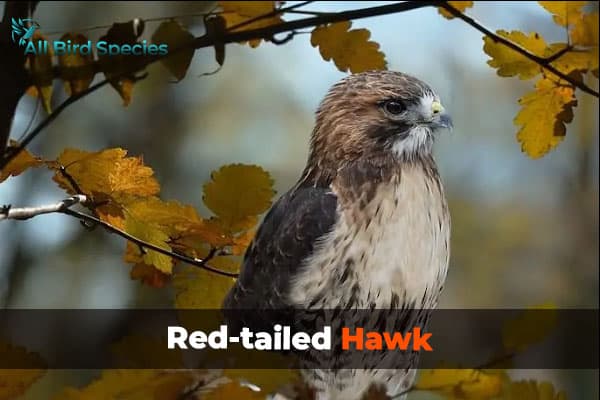
Red-tailed hawks are known for their impressive hunting skills and can often be seen soaring high in the sky, searching for their next meal. They build their nests in tall trees or on cliffs and lay 1-5 eggs at a time. Red-tailed hawks are an important part of the ecosystem and help to control the population of small animals.
22. Cooper’s Hawk

Cooper’s Hawk is a medium-sized bird of prey known for its agile flight and hunting skills. These hawks are often found in wooded areas where they hunt for small birds and mammals. With their distinctive banded tails and reddish eyes, Cooper’s Hawks are skilled predators that use surprise attacks to catch their prey.
23. Sharp-shinned Hawk
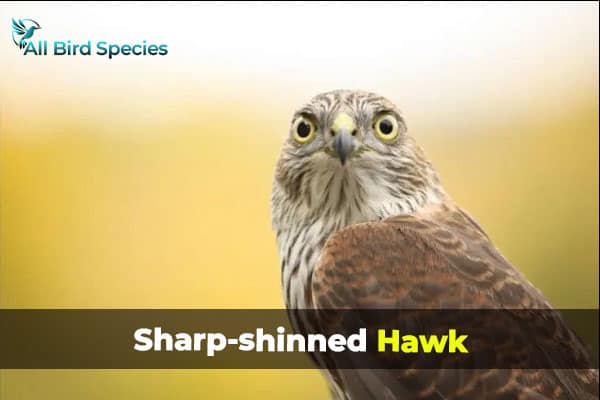
The Sharp-shinned Hawk is a small raptor recognized for its short wings and long tail. These hawks are expert fliers, maneuvering swiftly through dense forests to capture small birds. With their sharp talons and keen eyesight, sharp-skinned hawks are efficient hunters who play a vital role in maintaining ecological balance.
24. Northern Harrier

The Northern Harrier is a slender raptor with a distinctive owl-like face and long wings. These birds rely on their keen vision and hearing to hunt for small mammals, reptiles, and birds in open habitats. Northern Harriers are known for their low, slow flight style and unique vocalizations, making them a fascinating species to observe in the wild.
Owls in South Carolina
South Carolina is home to a variety of owl species and other birds, including the majestic Great Horned Owl, the colorful Eastern Screech-Owl, the haunting Barred Owl, the elusive Short-eared Owl, and the ghostly Barn Owl. These nocturnal birds of prey play essential roles in the ecosystem, controlling rodent populations and adding to the rich biodiversity of South Carolina’s natural landscapes.
25. Great Horned Owl
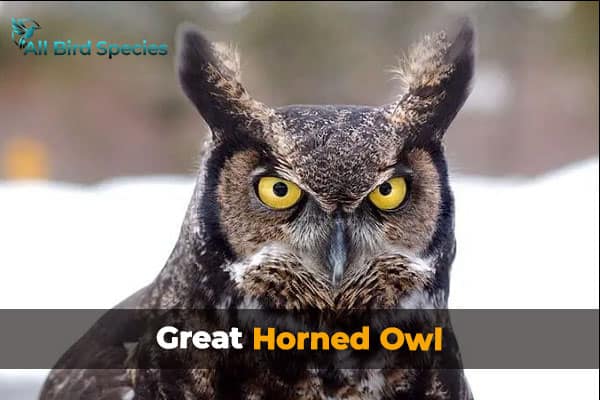
The Great Horned Owl is a powerful and adaptable predator with distinctive ear tufts and piercing yellow eyes. These owls are known for their deep hooting calls and impressive hunting skills, preying on a wide range of animals from small mammals to other birds. Great Horned Owls are iconic symbols of wisdom and mystery in many cultures.
26. Eastern Screech-Owl

The Eastern Screech-Owl is a small owl species found in wooded areas across eastern North America. These owls come in two color morphs, red and gray, blending perfectly with their surroundings. Eastern Screech-Owls are expert camouflagers and skilled hunters, feeding on insects, small mammals, and birds under the cover of darkness.
27. Barred Owl

Barred Owls are large, stocky owls with distinctive barred plumage and dark eyes. These owls have a haunting call that echoes through the forests where they reside. Barred Owls are skilled hunters who feed on a variety of prey, including rodents, birds, and even fish, making them important predators in their ecosystems.
28. Short-eared Owl
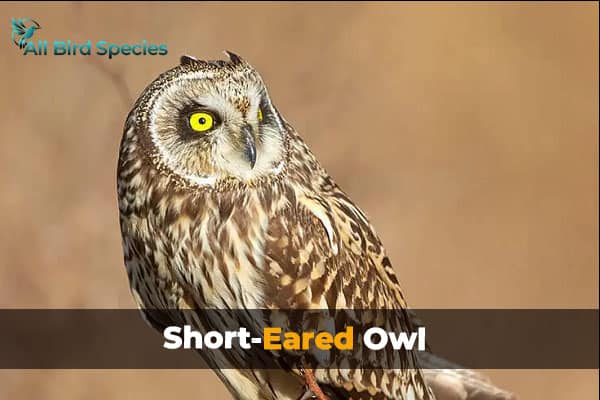
The Short-eared Owl is a medium-sized owl known for its distinctive facial disk and short ear tufts. These owls are often found in open grasslands and marshes, where they hunt for small mammals and birds. Short-eared Owls are agile flyers, using their keen senses to locate prey and maintain their status as efficient predators.
29. Barn Owl

The Barn Owl is a unique owl species with a heart-shaped face and pale plumage. These owls are silent hunters, using their exceptional hearing to locate prey in the dark. Barn Owls play a crucial role in controlling rodent populations, making them valuable allies to farmers and ecosystems alike.

